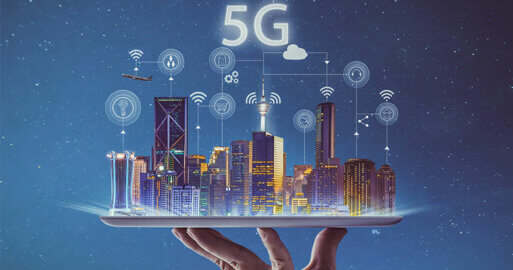Retail and CPG Companies in the Metaverse: What Will the Future Look Like?

Digital transformation has long since evolved beyond the optimization of internal company or industry processes. Digital marketplaces and their structures increasingly offer new and seemingly endless opportunities – such as entering the metaverse. In this blog, you’ll learn what the virtual world of the metaverse has in store for companies, especially those in the retail and consumer packaged goods (CPG) industries, and learn about both benefits and criticisms. For info on the metaverse basics, see the blog Welcome to the Metaverse.
Before you plunge straight into the virtual world of the metaverse, first ask yourself the following questions: How can your brand or company move into this new area?1 Does a digital flagship store really make sense in your case? What are the benefits and risks? What types of stores are conceivable and feasible? Let’s start with the advantages of the metaverse.
The benefits of the metaverse for CPG and retail companies
The metaverse is described as a virtual world that is immersive and not only based on text, which gives the user the opportunity to decide for himself how he wants to design his 3D environment in which he can move as an avatar. For companies in B2C or B2B, this offers some advantages both internally and externally:
1) Improved corporate communication and collaboration in the metaverse
In a virtual environment, employees from all over the world can communicate and collaborate with each other as avatars. With the ability to create different virtual work environments themselves, teams can work together in the cloud to develop innovative solutions directly at the point of sale (POS). They can also easily connect with other teams to enable the sharing of information and resources. Even training can take place interactively in the metaverse. If there is an area in the metaverse exclusively for employee avatars of a company or industry, this can become an exclusive event for employees, customers and partners. The metaverse is setting completely new standards for collaboration with partners from trade and industry value chains.
2) Increase productivity and efficiency for companies in the metaverse
Improved communication and interaction have a positive impact on productivity and efficiency. Companies can access a wide range of tools and resources in the metaverse to help them make their work even more effective, including virtual conferencing solutions, online project management tools and 3D modeling applications. With all these resources, companies can optimize workflows in the metaverse, work more specifically on solutions (which are themselves virtually represented) and incorporate requirements from their use directly into the development of new solutions.
3) Better product marketing for retail and CPG companies in the metaverse
Companies can present and market offers in a virtual environment in a creative and novel way. You can find examples of this in the 3D visualization section. These show excellent opportunities to attract new customers and strengthen the company’s brand. Especially for e-commerce, the metaverse offers completely new sales opportunities. Did you know that visitors stay longer on e-commerce websites through the use of augmented reality? VR can be used as a tool for interactive experiences when a company sells experiences, for example. Other ideas for businesses in the metaverse include:
- Digital twins
In B2C, digital twins are among the most exciting opportunities in the metaverse. A digital twin is a virtual representation of a real object, which is updated in real time. Companies can use digital twins to showcase their products and services, but also to virtualize stores and PoS areas from real brick-and-mortar spaces to offer customers an experience based on their needs, such as familiarity or stimulation. - Marketplaces in the metaverse
Goods can be exchanged on marketplaces in the metaverse as well as offline. Artists can also present their artworks in virtual vernissages and even sell their digital works there using NFT and blockchain. - Virtual Influencer
In the metaverse, virtual influencers are computer-generated characters or avatars who operate in virtual worlds or social media platforms. Unlike traditional influencers, who are real people, virtual influencers exist exclusively digitally and have no physical presence. They can act as brand ambassadors, promote products, participate in virtual events and interact with other users. Virtual influencers are part of the ever-growing fusion of the real and virtual worlds and play an increasingly important role in digital culture and marketing. - 3D visualization
In 3D visualization, computer graphics, models, and animation are used to create the visual representation of the metaverse. These techniques allow users to move, see objects, and interact in the virtual environment. Through the use of virtual reality (VR) or other immersive technologies, 3D visualization in the metaverse can provide an immersive and impressive sense of presence. Examples of 3D visualization include:- Virtual product presentation in the metaverse
Virtual product presentations in metaverse refer to the display and demonstration of products in a virtual environment. Companies use this technology to present their products in an innovative and appealing way and offer potential customers a special experience. Virtual product presentations are more detailed compared to virtual showrooms and offer a comprehensive understanding of the product - Virtual showrooms or shop windows in the metaverse
Virtual showrooms in the metaverse are digital environments that allow companies to display their products or services in a virtual reality. They serve as virtual showrooms or storefronts where users can view, explore and sometimes even interact with products in an immersive and interactive environment. For example, virtual fashion weeks already exist today in the metaverse, where fashion is presented by avatars.2 Compared to virtual product presentations, virtual storefronts aim to arouse interest and encourage the user to take further steps. - Virtual fitting in the metaverse
Virtual fitting rooms allow users to digitally try on garments or other products in real time without physically owning them. These models are then projected onto the user’s body, either by using avatars or by capturing and mapping the user’s body structure using 3D scans or other technologies. In e-commerce, AR technology can be used, for example, to offer digital fashions so consumers can try on cosmetics, glasses and other retail items with the “Try Before You Buy” method.
- Virtual product presentation in the metaverse
4) New investment opportunities in the metaverse
The metaverse offers versatile opportunities for investment and financial transactions, including opportunities for raising investment capital. The following offer an advantage for CPG and retail markets in the metaverse:
- NFT in the metaverse
The metaverse is not only about virtual worlds and avatars, but also about the integration of cryptocurrencies and blockchain technology. An important aspect of this is NFTs, which represent unique, digital assets. They are a very important component in the metaverse, supporting both digital commerce and a healthy ecosystem.3 NFTs can be used in different areas of the metaverse, for example, as virtual artworks, trading cards, or even virtual properties. In games, for example, players have long been able to buy wearables, which are clothing items and accessories for avatars. The advantage for companies: There are new artistic and creative expressions that create a new economic system with digital property rights. NFTs can be interoperable across different metaverses and virtual worlds, encouraging the free exchange of digital assets and expanding the reach of markets in the metaverse. Of course, there are also challenges and potential risks associated with NFTs in the metaverse, such as the volatility of NFT markets and the possibility of fraud or copyright infringement. It is important to consider these issues and take appropriate steps to make markets in the metaverse safe and fair. - Transactions in the metaverse
Companies can purchase virtual tokens in the metaverse and use them as an investment. Tokens, or coins, can then be sold or traded to other users. If they are held for a long period of time, the value can increase and profits can be made. Cryptocurrencies are also popular digital payment methods. These payment methods eliminate the need for states as guarantors of payments and banks as independent institutions to ensure transparency and settlement of payment flows. Via blockchain, transaction data between owners is stored and encrypted on multiple tamper-proof servers, according to pre-agreed and built-in contract rules, to support the spread of a cross-border metaverse.
However, digital payment models in the metaverse will not only relate to new, digital means of payment. Traditional banks will also be present in the metaverse. Many interactions will continue to be handled directly via encrypted bank accounts or credit cards in the metaverse. PayPal, for example, is already harmonizing old and new payment flows.4
Criticisms of the metaverse
Of course, there are justified criticisms of the metaverse concept that should not be underestimated. Often, these are barometers of the maturity of the still-emerging, digital space. These include the following topics:
- Privacy: There are concerns that the metaverse will be another way for companies to collect and use users’ personal data. The metaverse may lead to another form of surveillance and control. Is the data users share there secure? Is their identity protected?
- Lack of cybercrime security: As the metaverse grows in popularity, so does the number of hackers and scammers attempting to enter virtual worlds and steal or manipulate private information. This can pose a serious threat to anyone trading and sharing content online – which, of course, is especially the case in the metaverse.
- Unequal participation: The metaverse can be another way to deepen the digital divide between those who have access to technology and those who do not, creating digital class distinctions. As a result, there is a risk that only privileged groups will be able to reap the benefits of the metaverse and others will be excluded, including people with limited access to financial resources and those in rural areas or without Internet access.
- Alienation from the real world: As people increasingly spend time in virtual space, there is a risk that they will become alienated from the physical world and neglect social interactions in the real world.
- Difficult implementation and extension of the metaverse: The technical and legal requirements are very complex. Currently, there are only a few hardware and software solutions that enable such virtual reality. If the metaverse succeeds in moving away from central server farms, which it needs in terms of real dissemination and acceptance, new questions will arise that will be addressed in the context of GAIA-X, for example.
- Concerns about governance, regulations and sovereignty:
- Who will be responsible for the content in the metaverse?
- How is security ensured?
- How do we ensure that social media effects such as self-reinforcing echo chambers of hate speech or other harmful content, do not form in the metaverse?
- How do we ensure that monopolization and concentration of power do not spread further, as has happened with big tech corporations in the past with cloud services?
Conclusion
The metaverse offers a variety of benefits for companies, from the expansion of teamwork to new possibilities for branding and presentation, such as virtual fitting rooms as well as virtual showrooms. Especially for retail and CPG merchants, the metaverse is suitable as a supplement to their own online stores and marketplaces.5 However, it is important to keep legitimate criticisms such as data protection and security in mind and to consider them when planning and implementing projects. Nevertheless, companies should not hesitate to take advantage of the opportunities offered by the metaverse and expand their presence there. Retail and CPG in particular can take a pioneering role here and offer further integration opportunities for B2B processes. Shop-in-shops, embedding digital twins into the sales process and remote customer services can all be tailored to the needs of your customers.
The future of the metaverse is promising, and it will be exciting to see how companies use this new technology to optimize their business processes and reach customers even better, as well as how new forms of coupling B2B and B2C processes emerge.
1 Vgl. Cathy Hackl: Metaverse und NFTs für Marketing
2 Vgl.: Metaverse Fashion Week: Das sind die Highlights der virtuellen Modewoche | Vogue Germany
3 Vgl.: www.rooom.com
4 Vgl.: PayPal erweitert die mobile App um Krypto-Funktionalitäten | Metaverse-Post
5 Vgl.: Metaverse: Händler sehen Potenzial – EHI Retail Institute
Thank you for your message
We appreciate your interest in SEEBURGER
Get in contact with us:
Please enter details about your project in the message section so we can direct your inquiry to the right consultant.
Written by: Alexandra Pörner
Alexandra studied German language and literature in Mannheim and Waterloo (Canada). As part of the editorial team at SEEBURGER she combines her passions for language and travel on extensive workations, which she particularly enjoys capturing on camera. When she's not traveling in other climes, she likes to join meetings with a coconut latte at the coffee bar.





